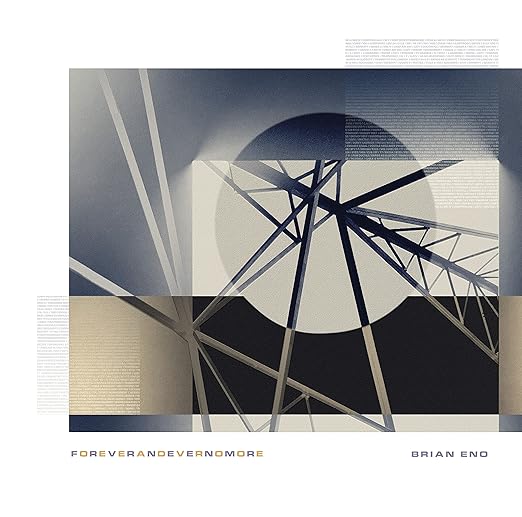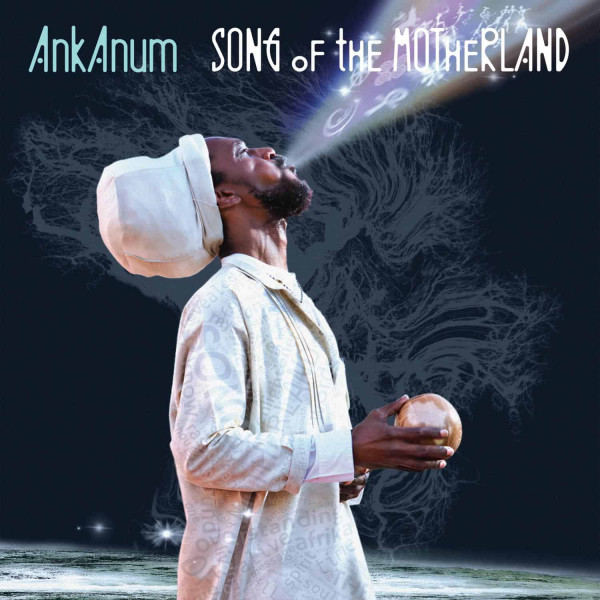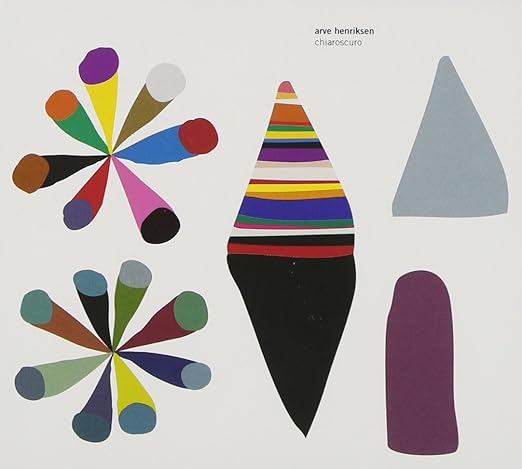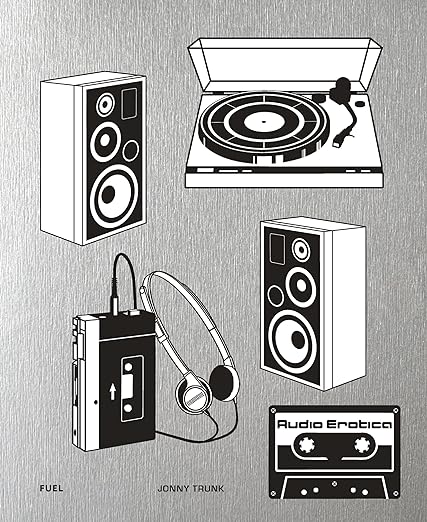Ank Anum: From Nowhere to No. 29 in Michael’s Desert 100 (for Leah Kardos)
in regards to my no. 1:
Not forgetting all things lost
in the fire of our lives
(as far as we can remember).
Sometimes, from a distance, everything
(losses first, and hands still to hold)
falls into place. No catchy songs,
no singalongs, no fairytale parallel worlds,
no hooks, no future evergreens, oh,
hold on, in their own peculiar way
Brian Eno’s modern day lamentations are
a collection of future „everblues“,
haunting, uncanny, anti-
grandiose, epic, enigmatic &
beautiful in a dark way. (m.e.)And how then could it be
That we appear at all?
In all this rock and fire
In all this gas and dust
Are we not each a flame?
All born to live in light
All born to give our light
1) Brian Eno: Foreverandevernomore
2) Talk Talk: Laughing Stock
3) Robert Wyatt: Rock Bottom
4) Joni Mitchell: Hejira
5) Ralph Towner: Solstice
6) Robert Wyatt: Rock Bottom
7) Brian Eno: On Land
8) Keith Jarrett: The Survivors´ Suite
9) David Bowie: Black Star
10) Brian Eno: Another Green World
11) Neil Young: Tonight‘s The Night
12) Underworld: Second Toughest In The Infance
13) Miles Davis: In a silent way
14) Leonard Cohen: Songs of Love and Hate
15) Paul Bley: Open, To Love
16) Eno / Byrne: My Life in The Bush Of Ghosts
17) Fire! Orchestra: Echoes
18) Steve Tibbetts: Life Of
19) Beth Gibbons: Lives Outgrown
20) Talking Heads: More Songs About Buildings And Food
21) P.J. Harvey: I Inside The Old Year Dying
22) The Go-Betweens: Spring Hill Fair
23) Jan Garbarek: Sart
24) The Beatles: Sgt. Peppers Lonely Hearts Club Band
25) Young Marble Giants: Colossal Youth
26) Jon Hassell/Brian Eno: Possible Musics
27) Laurie Anderson: Big Science
28) The Flaming Lips: Yoshimi Battles The Pink Robots
29) Ank Anum: Song Of The Motherland
30) Wire: Chairs Missing
31) Weather Report: Mysterious Traveller
32) Floating Ponts / Pharoah Sanders: Promises
33) Dadawah: Peace and Love
34) David Bowie: Low
35) Neil Young: On The Beach
36) Marion Brown: Geechee Recollections
37) Codona: Codona 3
38) Jacques Brel: Brel (his last one, with clouds on the cover)
39) Soft Machine: Third
40) a choice between 66 roots reggae albums
41) King Crimson: Discipline (or three other Crimons, growers forever)
42) Bill Callahan: Apocalypse
43) John Coltrane: A Love Supreme
44) Brian Eno: Taking Tiger Mountain (By Strategy)
45) J.J. Cale: Naturally
46) Edvard Vesala: Nan Madol
47) Punkt: Crime Scenes
48) Gavin Bryars: The Sinking of the Titanic (Obscure Records)
49) Gary Peacock: Paradigm – Voice Fron The Past
50) Van Morrison: Veedon Fleece
51) Arve Henriksen / Audun Kleive / Jan Bang: Chiaroscuro
52) Brian Eno: The Ship
53) Robert Fripp: Exposure
54) Talking Heads: More Songs about Buildings and Food
55) John Coltrane: A Love Supreme
56) Wilco: A Gost Is Born
57) Laurie Anderson: Big Science
58) Thomas Köner: Novaya Zemlya
59) Harold Budd & Brian Eno: The Plateaux of Mirror
60) Lambchop: Showtunes
61) Sidsel Endresen / Jan Bang / Erik Honoré: Punkt Live Remixes Vol. 2
62) Lucinda Williams: Essence
63) Punkt: Crime Scenes
64) David Sylvian: Manafon
65) Keith Jarrett: Belonging
66) Robert Fripp: Let The Power Fall
67) Egberto Gismonti / Jan Garbarek / Charles Haden: Magico
68) Anthony Braxton: New York, Fall 1976
69) David Holland: Conference Of The Birds
70) Can: Tago Mago
71) Kraftwerk: Autobahn
72) Robert Wyatt: Dondestan
73) Holger Czukay: Ode To The Peak Of Normal
74) The Go-Betweens: Liberty Belle and the Black Diamond Express
75) Miles Davis: Bitches Brew
76) Natural Infornation Society: Since Time Is Gravity
77) Keith Jarrett: Bremen / Lausanne
78) Joe Henderson: The Elements
79) Music from the Penguin Cafe Orchestra (Obscure Records)
The wonderful Moon Safari from Air is on no. 185. There‘s a constant flowflowflow amongst my 100 Desert Island Discs. Yes, there are errors, double placings etc, but I am working on this list til Saturday, and as soon as it is finished, it will vanish. Number 100, too, is a five star album. The personal is more important than the canonical element.
80) Van Morrison: Veedon Fleece
81) Television: Marquee Moon
82) Jon Balke: Warp
83) Brian Eno: Music For Airports
84) Meredith Monk: Dolmen Music
85) The Kinks: a best of compilation
86) Shabaka: Perceive Its Beauty, Acknowledge Its Grace
87) Bo Hansson: Lord of the Rings
88) Al Green: a best of compilation
89) Colin Walcott / Don Cherry / Nana Vasconcelos: Codona 2 (or 3)
90) Ryuichi Sakamoto: Left Handed Dream (or Async)
91) T. Rex: Electric Warrior
92) Caetano Veloso: Estrangero
93) Don Cherry: Brown Rice
94) Robert Wyatt: Shleep
95) Billie Holiday: Lady In Satin
96) Lewis: L’Amour
97) Bob Dylan: Desire
98) Lankum: False Lankum
99) Alice Coltrane: Journey in Satchinanda
100) Pharoah Sanders: Tauhid„Nine Doors, Breathing Space“
„I’m listening live on internet from Tahiti. So coooool. Thank you!“ (Jérôme Descamps) Die Idee war, neun aktuelle Alben vorzustellen – alle klanglich wie stilistisch sehr, sehr weit voneinander entfernt, und doch jazznah! Die Überschrift habe ich mir von einer Komposition von Steve Tibbetts geliehen. Besonderer Dank geht, neben Niklas und Karl, an Jérôme Descamps (Tahiti), Eric Chenaux (ländliches Frankreich), Wadada Leo Smith und Ingo J. Biermann (Central Park) für den Tanz über Architektur. Und 1000 Dank an Martina Bedzent für all das organisatorische Beiwerk ringsum so eine Jazzstunde herum! Die Reise kann beginnen! Ein Fest von Synchronizitäten!
Kronos Quartet and friends meet Sun Ra: Outer Spaceways Incorporated
Malcolm Jiyane Tree-O: True Story
Sidsel Endresen – Jan Bang – Erik Honoré: Punkt Live Remixes Vol. 2
Wadada Leo Smith & Amina Claudine Myers: Central Park’s Mosaics of…
B1: Christophe Monniot: Six Migrant Pieces (Karl Lippegaus)
William Parker / Cooper-Moore / Hamid Drake: Heart Trio
B2: Modney: Ascending Primes (Niklas Wandt)
Eric Chenaux Trio: Delights Of My Life
Christelle Séry / Jérôme Descamps: Te Ti‘amãEpping Forest Dreams
“We ride our bikes way up here after school / You know the way, the shortest way home“, sings Paul Newland to the end of this album. Childhood reminiscences mingle with pastoral impressions of the greenery of Epping Forest, as he looks back on life in earnest, contemplative mode like Sheffield balladeer Richard Hawley. Then it branches off onto a very different path. Limpid piano ripples hang in the air like Harold Budd, the double bass of Mike Seal adds earthy vibrations, and for over ten minutes, vintage synthesizer drones stretch out to the horizon like an endless summer day.“ (The Wire)

Some notes about this album I found while reading the August edition of WIRE. I then listened to it on Soundcloud, and these new songs and instrumentals stopped me in my tracks. What a melange of dreamspheres and places to go, of wonderful songs and deep meditations. A hot contender for my 20 favourite albums of 2024! (m.e.)Clevelode is Paul Newland and his collaborators. Newland was one-half of The Lowland Hundred, a critically acclaimed duo that released three albums, ‘Under Cambrian Sky’ (2010), ‘Adit’ (2011), ‘The Lowland Hundred’ (2014).
‘Muntjac’ is a paean to Epping Forest and its environs, an area on the outskirts of northeast London. It offers reflections on how an individual carries their place of birth – and its cultural identity – with them through life. It is a fluid mix of tender, reflective, psychogeographical songwriting and avant-garde unmade film score. Paul is accompanied on the album by upright bass player Mike Seal (A Different Thread / Farefeld) and Emma Morton of Brighton folk trio Sairie on backing vocals. A FLOWWORKER interview with Paul Newland is in preparation.
go to bandcamp for more… (listening, ordering, cd out today)
Can stone cold thrillers be heartwarming? Lou Berney did it again!

“The stoner thriller canon has a new candidate: Lou Berney’s Dark Ride…The author has a gift for creating characters and stories that infuse even the most sordid corner of humanity with unforced gentleness…This is the story of one man’s transformation from apathetic stoner to avenging angel…it also keeps the pages turning at a rapid clip. Berney’s thrillers have more weight than most, and more soul, and Dark Ride lives up to his established standards.” — Los Angeles Times
“Stellar… a friend of Marihuana and pure escapism with self-esteem laid low, Hardly is a memorable figure covering the ground between anti-hero and kind-of-hero with a deeply life-affirming message in face of the most digusting evil. This book, though being, on the surface, an adrenaline-fuelled, and, well, dark ride, even manages to contain a subtle sense of humour in our stoner’s survival package. Let‘s call it a hard-boiled „Entwicklungsroman“.“ – M. E., Flowworker
„Dark Ride is Lou Berney at his best. This story of a disaffected scare actor at a theme park who finds his purpose in the defense of two abused children is both thrilling and heartbreaking but ultimately life affirming. The story of a man who finally stands for something after a lifetime of falling for anything will haunt you.“ — S.A. Cosby, author of brilliant crime novels Der letzte Wolf and Blacktop Wasteland

P.S. At one point in the new novel, Mr. Reetze, there’s a track playing in Elenor’s car that seems to be a Kraftwerk track, possibly from „Autobahn“. I once asked Lou Berney about the music in my beloved „The Long And Faraway Gone“, and that the way he „soundtracks“ it never seems contrived. Here his answer that will make Lajla smile:
„Thanks for that! Much appreciated. I don’t have any rules except that — the music has to be an organic part of the story or the character, and not something I’m imposing. Sometimes I’m really influenced by what I’m listening to as I write. While I was writing The Long and Faraway Gone, I listened to a lot of Lindi Ortega, a fantastic roots-country singer-songwriter whose music really helped me get in the mindset of my characters. So I put her in the novel. She’s the singer in the red cowboy boots, at the Land Run, in the background of a conversation between Wyatt and Candace.“
Ein Geheimtipp für Klangsucher
Ich liebäugelte seit langem damit, mir diese Box zuzulegen. Jetzt tat ich es: Amazon verramscht diese wundervolle Schatzkiste mit sechd Cds für schlappe 10 (!!!!) Euro – jetzt gilt es, schnell zuzugreifen, Freunde des unerhörten Sounds. Das ist eine Avantgarde mit Charme, Witz, Tiefe, Melodie, Lust, und sanfter Radikalität. Sie lieben es, aus dem Staunen nicht mehr rauszukommen – bittesehr! Den letzten Anstoss gab Eric Chenauxs Loblied (s.u. – Eric ist nun dauerhaft auf unserem „Blogroll“). Ich nehme mal stark an, Amazon braucht Stauraum für die nächsten 25 Paletten Taylor Swift.
product description: Recorded between 1963-2019, Degrees Of Freedom Found is a six CD set “Blue” Gene Tyranny hand selected from archival, live recordings, and brand new first recordings before his passing in 2020. Part new album, part retrospective, this box offers a fresh perspective on “Blue” Gene Tyranny’s musical legacy. Blue’s career defining moment, composing the music for Robert Ashley’s magnum opus, Perfect Lives, typifies the Buddha-like self-effacement of his musical life. Often lending a substantial supporting role to his friends’ more visible projects, Blue’s music under his own name blossomed in a more esoteric and highly personal manner outside of the spotlight. Across its many previously unreleased recordings, Degrees Of Freedom Found showcases a surprising, extroverted side of Blue’s music, alongside the virtuoso works of sensitive spirit for which New Music devotees have long revered him.

I was so happy to hear that this record was coming out. Six CDs of “Blue” Gene Tyranny is wonderful – it could be 30. I adore his music so much. His work with Robert Ashley was my entry point, and then his solo piano playing and his strange kind of rock music that he was making in New York. He was of the generation of folks maybe one or two generations younger than John Cage and Morton Feldman, and he’s so unabashedly beautiful in what he plays. I don’t think he has any problem with something emerging that’s almost saccharine, with a DX7 sound, a washy keyboard. And it’s not ironic, he really means it. Yet it’s strange, it’s not just beautiful.
Whatever he’s tapping into there is at the centre of what I love about music. I’m very interested in finding strangeness in not the obvious places. Finding strangeness in beautiful places, and beauty in strange places. Also widening what is strange – like “Blue” Gene Tyranny playing a G major chord, the triad is just weird. Robert Wyatt’s a genius at that too – he knows how to make super simple things sound strange, and I think that comes out of curiosity in a radical sense, that allows people to show beautiful and strange things in a new light. “Blue” Gene Tyranny’s music will do that. He’s just a monster, and I really wish he were still around making music.
Beruhigungsmusik aus Leinfelden-Echterdingen
HEUTE ABEND: Die Klangcollage „TIM“ des Projekts MITTWOCH wird im „deutschlandradio kultur“ in der Sendung „Kurzstrecke“ am Donnerstag, 27.06.2024 zwischen 22.03 und 23.00h vorgestellt.
Seit ca. einem Jahr ist eine sehr grosse Baustelle direkt neben unserem Haus/Wohnzimmerstudio. Der Abriss des bestehenden Gebäudes brachte natürlich jede Menge Staub und Lärm, was oft nur schwer auszuhalten war. Wir haben den Abrissbagger bei seinem Werk aufgenommen und wollten mit den schwebenden, ambientartigen Sounds, die ihn bei „TIM“ umspielen einen ruhigen, wenn nicht beruhigenden, Gegenpart setzen. Piano, Keyboardsounds, Gitarre (mit dem e-bow gespielt), und Vocalsamples wurden verwendet, um der Unruhe Ruhe zu geben. Der Baggerfahrer war ein sehr netter Typ und zentimetergenauer Meister seines Fachs. So weit, so gut, es grüsst Lorenz Edelmann!
“Um Vento Passou“ (für Theo Göstenkors)
„Um Vento Passou” is a dreamy ballad filled with traditional percussion and sweeping strings, where Nascimento duets with his long-time collaborator Paul Simon: two croaky octogenarian geniuses singing in Portuguese and bringing decades of wisdom and warmth to a fine song. (…) This is much more of an Esperanza Spalding album than a Milton Nascimento one. But what Spalding has been able to do successfully is subsume herself into the world that Nascimento has created over the last 50 years – a dreamlike realm of folkloric myth, plugged into nature’s heartbeat. (John Lewis, Uncut)
Johnny Trunk: Audio Erotica (Hi-Fi Brochures 1950s – 1980s)
Remember roller-skating while wearing your first Walkman? Or relaxing to easy listening in your pure white Philips lounge? Or playing chess on your JVC tabletop radio? All these scenarios can be found in the geeky and rarefied world of the vintage hi-fi brochure, where graphic design and acoustic apparatus make magical music together.
From austere postwar Britain to poppy pre-millennium Japan, Audio Erotica presents a nostalgic nirvana of the strangest and most significant period hi-fi brochures. The volume acts as a companion title to the delightful Jonny Trunk/FUEL publication, Auto Erotica: A Grand Tour through Classic Car Brochures of the 1960s to 1980s and is manufactured in the same format. Alphabetically listed, from Aiwa to Zenith, with Braun, JVC Nivico, Nakamichi, Sony and everything in between, this book will resonate with any music fan.
Setting the tempo are the pipe-smoking, high-end separates (amplifiers, speakers, turntables) of the 1950s, followed by the swinging Dansette record players of the 1960s, the prog-brushed-metal music centers of the 1970s and the sleek capitalist cabinet stack systems of the 1980s—not forgetting the aerobic stereo sound portability facilitated by the boombox, and that final high-fidelity, hardware hurrah: the compact disc.
The evocative brochures in Audio Erotica track the technological development of audio equipment before the digital download, while simultaneously revealing the way hi-fi was marketed to the listening public. With knobs on. A striking screen-printed graphic cover on „brushed aluminum“ paper echoes the hi-fi systems shown in the brochures.Dreams of an Ending
Thanks Michael!
Trying to finish this „album“ up, (what is an album, anyway?) but it gets longer and longer, more and more ideas. I will probably end up with a separate album of cast-offs and insane live cuts from ages ago when we were not afraid to lose our hearing, and the hearing of our audiences.
Nearly two years ago:
I’m still working on the next album. It’s a good one, so I’m taking my time. I have one year left in my studio before I get ejected, so I am in no hurry. (…) I am very happy you are still on the radio. I think your voice & selections are best for the magic hours between midnight and 4AM, but we’re all getting older, and sleep can be its own reward. (I loved working those weekend hours at Minnesota Public Radio in my 20s–radio stations are magical at that time, even though you know there are probably only 20 people listening.) (s.t.)

22.52 Uhr. Hyères. Der Gesang in der Luft. 25 Grad und sternenklar. Nicht nur an der Nordsee kann man von einer Radiostation am Meer träumen. Zu den Ritualen des Herumschweifens zählt auch das Mosaik einer Radionachtstunde – so sähe sie im Moment aus, lauter neue Produktionen des Jahres 2024 (aber wo bringe ich den Central Park unter, die Träumereien von Wadada Leo Smith und Amina Claudine Myers?)… 1 Alva Noto 2 Kali Malone 3 Julia Holter 4 Warrington Runcorn New Town Development Plan 5 David Boulter 6 Erik Honoré 7 Pan American & Kramer 8 Beth Gibbons 9 Bill Frisell. Das von mir gewählte Stück von „Orchestras“ hätte auch auf Beth Gibbons Mix-Tape „Mellow Beth“ in Brüssel laufen können in ihrem Vorabendprogramm. Neben diesem hier: “Evening Star“. Und natürlich völlig unmöglich, in diese Sequenz jenes wundersam verrückte Album aus den Achtzigern hier hereinzuschmuggeln, das ich mir zum Record Store Day besorgte: Suns of Arqa: Wadada Magic. (m.e.)
„Weisst du noch, damals, in Warrington und Runcorn…“
Ist es nicht schön verrückt, die „Klanghorizonte“ Ende Juli mit einem brandneuen Album zu beginnen, das sich mit Städteplanung auseinandersetzt, der „New Towns“- Bewegung im alten England der siebziger Jahre?! Das vierte Album der Serie wurde vielfach gefeiert, und in „Electronic Sound“ zum Album des Jahres 2023 gewählt.
„Hub Your Community“, das fünfte Album der Serie des „Warrington-Runcorn New Town Development Plan“ setzt Gordon Chapman-Fox‘ klangliche Erkundung diesér Bewegung fort und zeigt, wie die Probleme, die sie zu lösen versuchte, auch heute noch nachhallen. Das Hauptthema nun: die Gemeinschaft und die Gemeinschaftszentren, die die Ortschaften Warrington und Runcorn bevölkerten, um den Menschen alle Einrichtungen zu bieten, die sie innerhalb von fünf Minuten zu Fuß von ihrem Haus aus erreichen konnten. In den letzten 50 Jahren sind nicht nur diese Gemeinschaftszentren, sondern auch die von ihnen angebotenen Dienstleistungen zurückgegangen – sei es der praktische Zugang zu einem Haus- oder Zahnarzt, zu einem Postamt usw. -, da die aufeinander folgenden Regierungen diese grundlegenden Dienstleistungen untergraben und ausgehöhlt haben.
Die Torys von Mrs. Thatcher gingen da mal wieder federführend voran – fragen Sie mal Robert Wyatt! Die letzten 50 Jahre waren auch einem Rückgang des „geneinschaftlichen Lebens“ geprägt. Thatchers Aussage, „there is no such thing as society“, wurde damals belächelt, aber die nachfolgenden Tory-Regierungen haben sich dies zum Leitbild gemacht und versucht, dem Land so viel Unterstützung und Gemeinschaft wie möglich zu entziehen und jeden sich selbst zu überlassen.
Es hat durchweg faszinierend, wie Gordon Chapman-Fox diese alte Welt und ihre Verlustmeldungen klanglich aufleben lässt. Nie berechenbar begegnen sich hier kühle Maschinen-Elektronik und zu Herzen gehende Electronica. Dabei trägt sich die klug und sinnlich komponierte Musik dieses Albums von allein, ohne Gebrauchsanweisung und Sozialkundeunterricht -, und es wäre schön zu lesen, welche anheimelnden und unheimlichen Sphären Jan Reetze hier ausfindig macht, an was ihn diese gesammelten Dystopien und Maschinenträume erinnern.
Der Transfer zu leblosen Sattelitenstädten und gescheiterten Projekten der alten BRD ist wohl eher eine traurig leichte Übung. Unter dem Strich ist es eine tolle Sache, wie hier mit den Mitteln der elektronischen Musik „aural history“ betrieben wird. Irgendwann wird es gewiss eine sehenswerte Dokumentation geben, oder eine Netflix-Serie. Der Soundtrack liegt schon vor.